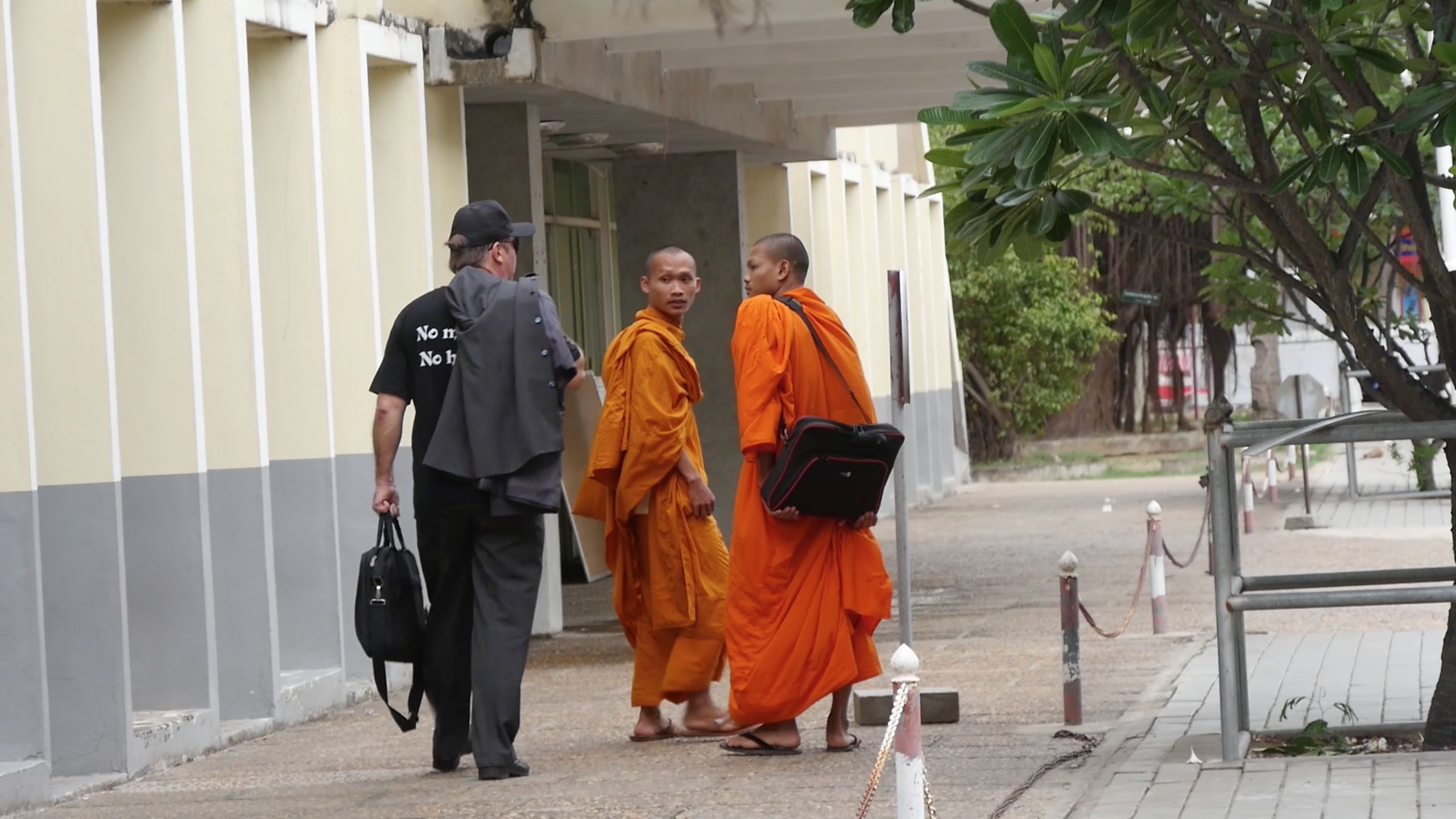The world is full of mysterious organizations but who and what exactly is K.O.W?
KOW is a name given to an enigmatic organization that on eight occasions has posted a set of complex sonic emissions embedded within psychedelic music releases to recruit codebreakers from the public. KOW Korporation has been called one “the most elaborate and mysterious puzzles in cyber space” and is listed as one of the “top 5 eeriest, unsolved mysteries of the internet” by The Washington Post. Others have claimed KOW is in actual fact a CIA-sponsored mind control program thinly veiled as alternate psychedelic rock’n’roll band The Kosmic Kows
 but despite trillions of online music downloads – no company or individual has taken credit or tried to monetize The Kosmic Kows, combined with the fact that no known individuals that have ever seen the The Kosmic Kows live and come forward, has led most to feel that it is not. Others have claimed that The Kosmic Kows is an actual fact a highly secretive organization is run by a bank working on cryptocurrency.
but despite trillions of online music downloads – no company or individual has taken credit or tried to monetize The Kosmic Kows, combined with the fact that no known individuals that have ever seen the The Kosmic Kows live and come forward, has led most to feel that it is not. Others have claimed that The Kosmic Kows is an actual fact a highly secretive organization is run by a bank working on cryptocurrency.
(KOW hackers use poorly rendered Photoshop images of members of the CSP )
On May 1, 2015, following an anonymous tip off Interpol’s crack team of investigators discovered K.O.W. operatives working from Cambodia but despite extension cooperation with local authorities, KOW operatives we able to slip away and are possibly still at large in Cambodia (a developing country also known as The Kingdom of Wonder). Following the operations dismal failure Interpol suggested local Investigators failed to probe key points and may have in fact turned a blind eye to glaring clues. High profile special agents Oun & Bong were recruited to launch a new investigation “Operation Kosmic” earlier this year, however, little has been revealed about the operation’s progress and whether or not agents are indeed working inside Cambodia. KOW emissions continue to confound all attempts to reveal the full extent and purpose of the mysterious organization.
Types of clues
The KOW 66 clues have spanned many different communication media including internet, telephone, original music, bootable Linux CDs, digital images, physical paper signs, and pages of unpublished cryptic books. In addition to using many varying techniques to encrypt, encode or hide data, these clues also have referenced a wide variety of books, poetry, artwork and music. Each clue has been signed by the same GnuPG private key to confirm authenticity.
Among others these referenced include Literary and artistic works:
· Agrippa (A Book of the Dead), a poem by William Gibson
· The Ancient of Days, a design by William Blake
· Anglo-Saxon Rune alphabet
· Johann Sebastian Bach
· Cuneiform
· Ecclesiastes
· M. C. Escher
· Francisco Goya
· Gödel, Escher, Bach, a book by Douglas Hofstadter
· Kōans
· Liber AL vel Legis by Aleister Crowley
· The Lady of Shalott, a painting by John William Waterhouse
· The Mabinogion, a series of pre-Christian Welsh manuscripts
· Mayan Numerology
· The Marriage of Heaven and Hell, a book by William Blake
· Nebuchadnezzar, a design by William Blake
· Newton, a design by William Blake
· Self-Reliance by Ralph Waldo Emerson
· Song of Liberty, a poem by William Blake
· Antifragile: Things That Gain from Disorder by Nassim Nicholas Taleb
Allegations of illegal activity
Authorities from the Kampot Province of Cambodia claim that KOW 66 is a “hacker group” and engaged in illegal activities. KOW 66 responded to this claim by issuing a PGP-signed statement denying any involvement in illegal activity.

In July 2015, a group calling themselves “66” claimed to have hacked Planned Parenthood; however, the group appears to have no connection to KOW 66. KOW 66 later issued a PGP-signed statement stating they “are not associated with this group in any way” and also stated that KOW 66 does not “condone their use of our name, number, or symbolism.” The hacker group later confirmed that they are not affiliated with KOW 66.
Claims of being a cult
As the group has gained notoriety and public attention, many have asserted that the sonic emissions are an introduction to occult principles, and possibly even recruitment for a cult. Dr. Brian Tolworthy, a senior research fellow with the Family Research Council, analyzed the teachings of KOW 66, and stated “the enigmatic KOW66 appears to be drawing participants inexorably into the dark web of the occult a la Blavatsky and Crowley. At the heart of the enchantment is the counterfeit promise of ultimate meaning through self-divination.”
Dailey analyzed the sonic emissions and the KOW 66’s book Liber Primus and summarized some of the groups’ core beliefs:
· There is no inherent meaning in anything, and all is “empty and meaningless”
· Within each person is an ideal state akin to Nietzsche’s Übermensch
· The existence of an emergent god-like Global brain made up of all living things and technology, as described by cyberneticist Francis Heylighen
· There is no need for salvation, because there is nothing from which we must be saved
· There is no “real” reality, and what we perceive as reality may be a simulation
· Their use of the term “intelligence” rather than “person” throughout the Liber Primus seems to indicate belief, or at least concern for, sentient artificial intelligence.
· Many of their writings and beliefs focus on ego death
· Liber Primus and other KOW texts adhere to an internal Qabalah system based around KOW 66’s Gematria Primus
Others have claimed that the KOW 66 sonic emissions are a modern and technological equivalent to the enlightenment journey within Western esotericism and Mystery schools
The KOW Mind Control Mystique
Anywhere in Cambodia you can walk into a KTV beer garden and hear Khmer Pop is blasting from decrepit sound systems, bodies sway and feet move in synchrony. Somehow the rhythmic sound grabs control of the brains of everyone in the room and forces them to operate simultaneously to a local version of Billy Ray Cyrus’ Achy Breaky Heart thus performing the same behaviors in synchrony. How is this possible? Is this unconscious mind control by rhythmic sound only driving our bodily motions, or could it be affecting deeper mental processes?
The mystery runs deeper than previously thought, according to psychologist Anthony J. Bongulatorio reporting new findings at the 2015 Society for Neuroscience meeting in New Orleans. Rhythmic sound “not only coordinates the behavior of people in a group, it also coordinates their thinking—the mental processes of individuals in the group become synchronized.”
This finding extends the well-known power of music to tap into brain circuits controlling emotion and movement, to actually control the brain circuitry of sensory perception. This discovery helps explain how drums unite tribes in ceremony, why armies march to bugle and drum into battle, why worship and ceremonies are infused by song, why speech is rhythmic, punctuated by rhythms of emphasis on particular syllables and words, and perhaps why we dance.
Bongulatorio and his graduate student Bradford Bywater from the University of Tasmania first tested subjects by flashing a series of images on a video monitor and asked them to quickly identify when an image was flipped upside down. While participants focused on this task, a synthetic drumbeat gently tapped out a simple four-beat rhythm in the background, syncopated by skipping the fourth beat of each measure.
The results showed that when the image was flashed on that missed beat, the subjects identified the inverted image much faster than when the image was flashed at times out of synch with the beat or when the images were presented in silence. Somehow, the brain’s decision making was accelerated by the external auditory rhythm and heightened at precise points in synchrony with the beat. Since the power of rhythm in boosting cognitive performance was evident on the missing beat when no sound was presented, the effect could not have had anything to do with the sound of the drumbeat acting as a stimulus. Mental processing must have fallen into a rhythm of heightened expectation and superior performance on the anticipated beat.
Next the researchers attached electrodes to the scalp of such subjects to determine if the brain’s electrical activity was somehow affected by the rhythm of the sound. The KOW recording detects the combined electrical activity of thousands of neurons working together in the cerebral cortex. Just like the roar of a crowd at a baseball game, waves of electrical activity in the brain are generated when individual neurons in the cerebral cortex are combined in action. The KOW recordings showed that the waves of brain activity (alpha and beta waves) became synchronized around the auditory rhythm. That is, the ongoing oscillations of brain waves became phase shifted so that the peak of the wave always occurred at a precise point relative to the next beat in the drum rhythm. Rhythmic sound synchronizes brain waves.
The brain wave recordings also revealed a more surprising effect of rhythmic sound on brain function. Any sensory stimulus, such as seeing a picture or hearing a sound, will generate a brief brain wave in the region of cerebral cortex where such information is received and processed, much like the crack of a bat at home plate causes an eruption of cheers in a stadium. The researchers found that the sensory-evoked brain wave measured at the back of the skull over the region where vision is processed, peak each time the image was presented, but when the image was presented simultaneously with the missing drumbeat, the electrical response evoked by the picture was bigger than when the image was presented out of rhythm or flashed on the screen in silence. These visual circuits are more responsive when the image appears in synch with the auditory rhythm.
This region of the brain processes the earliest steps in vision, the circuits that detect visual input. This means that our perception of the external world entering our mind through our eyes is affected by the rhythm of what we hear. Something seen at a point precisely in beat with an auditory rhythm is more likely to be perceived than if it appears out of synch with the rhythm. This gating of visual input by auditory rhythm does not require a prolonged meditation on the rhythm to cause the person to enter into some sort of a trance-like state; the effects are nearly instantaneous. “Within a few measures of music your brain waves start to get in synch with the rhythm,” Bongulatorio says.
Professor Jan Mueller has said that music is “auditory cheesecake,” with no particular advantage in the evolution of our species. Bongulatorio feels their new results do not support that view. “Rhythm facilitates our interpersonal interactions in term of not only how we move, but how we talk and think,” he concludes. “Rhythm facilitates people interacting by synchronizing brain waves and boosting performance of perception of what the other person is saying and doing at a particular point in time.” Rhythm, whether the lyrics to a song or the meter of a poem facilitates language processing, she concludes, and she is now undertaking new experiments to further test this idea. “When people move in synchrony they are more likely to perceive the world in synchrony, so that would facilitate their ability to interact.”
So to conclude: who are the Kosmic Kows? All we really know is that they are an amazing band in Cambodia: agents Bong and Oun remain in the field investigation the case and in a recent breakthrough, their intensive efforts has lead to the discovery of a secret a KOW Korporation recording studio. Agents Bong and Oun successfully apprehending KOW’s principal sonic emission engineer GrooV GurU, however, in the confusion surrounding this major arrest, members of The Kosmic Kows escaped remain at large.














